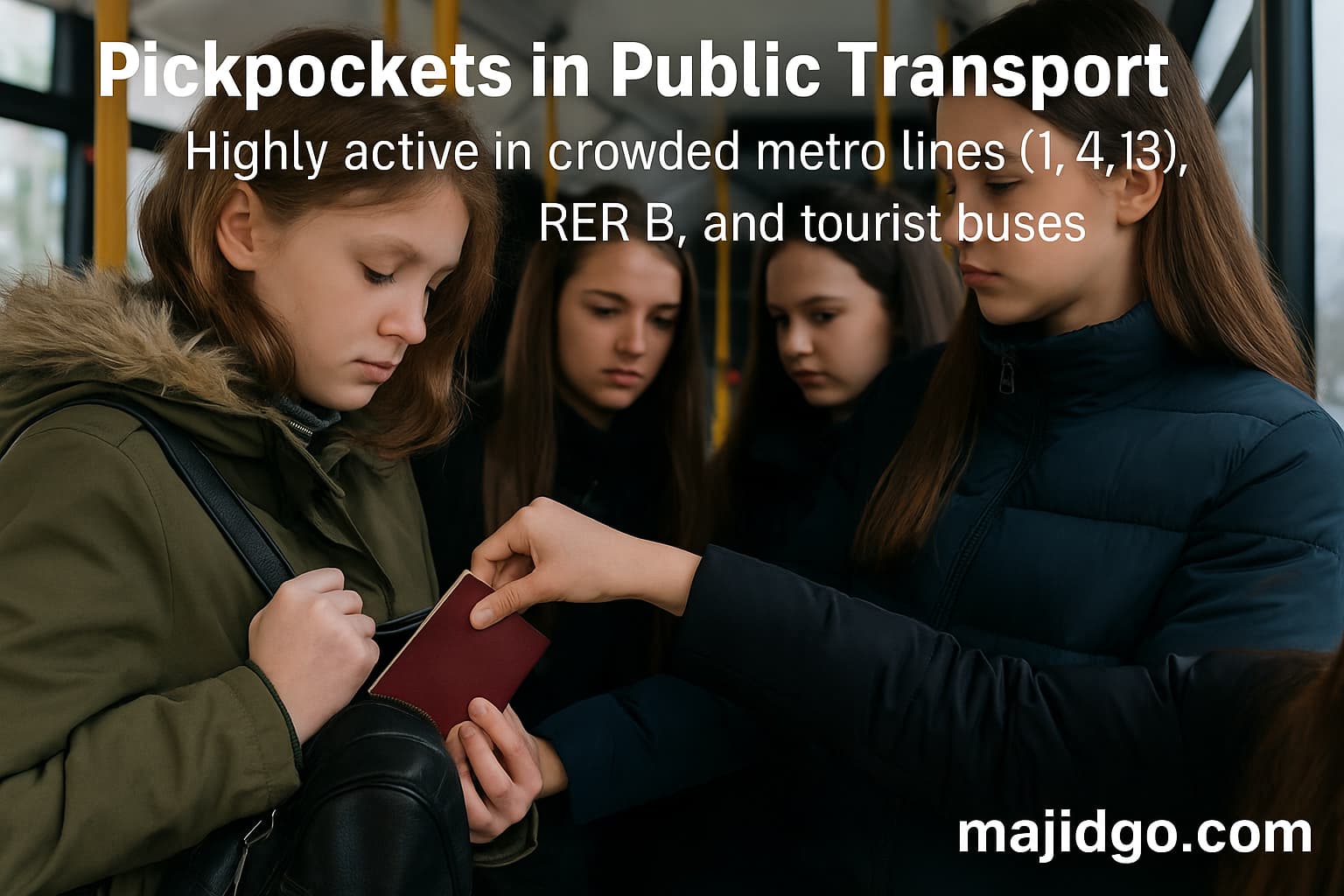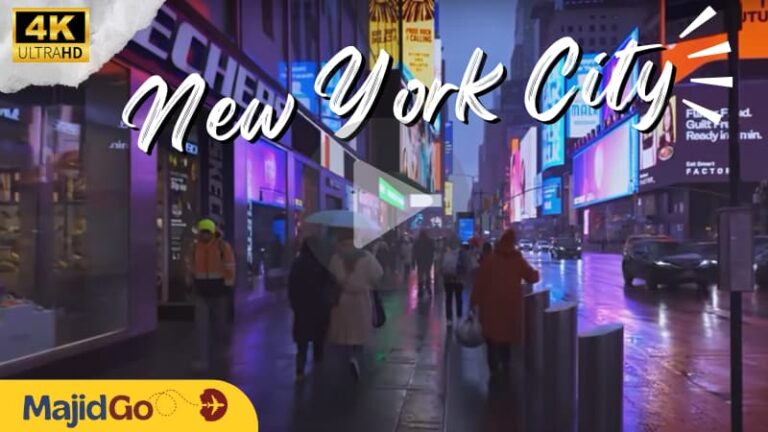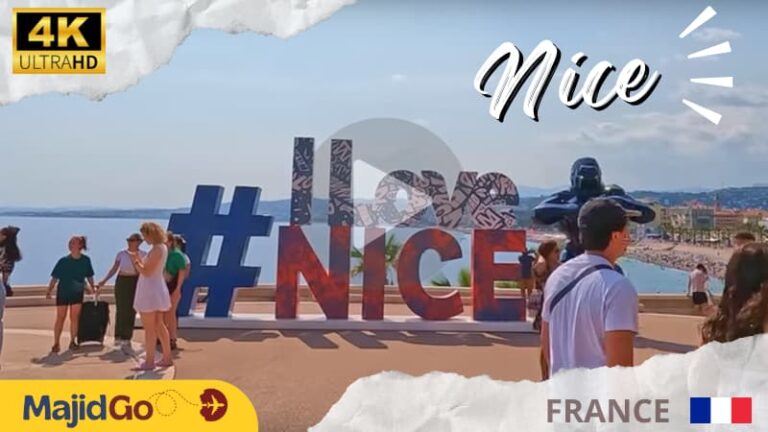Explore This Guide
Paris – The City of Light
Paris needs no introduction. As the most visited city in the world, Paris is a blend of culture, cuisine, romance, and timeless architecture. From the Eiffel Tower to hidden cafés, every corner is worth exploring.
Stroll through cobbled streets, marvel at the Notre-Dame, take a boat ride along the Seine, or get lost in the charm of Montmartre. Paris is more than a trip – it’s a feeling.
Traveling to Paris is simple. Fly into Charles de Gaulle Airport or Orly Airport, then take the metro or RER straight to the heart of the city.
Before exploring, check the current weather. Paris changes with the seasons, and each one offers something special.
In this guide, discover must-see landmarks, travel tips, and what makes Paris unforgettable.
Why Paris Captivates Every Visitor
Paris Weather
Planning your itinerary? Stay updated with live weather info for Paris. Rain or shine, knowing the forecast helps you make the most of your day.
Getting Around Paris
Paris is well-connected with metro, buses, trams, and RER trains. Whether you’re traveling from Charles de Gaulle Airport or moving between districts, the transport system is fast and affordable.
Tip: Use the Navigo Easy Pass for convenient travel across the entire city.
Where to Shop in Paris
For fashion, food, and unique finds, Paris is a shopper’s dream. Head to Galeries Lafayette, Le Marais, or Champs-Élysées for everything from luxury to vintage.
Tip: Don’t miss the hidden boutiques in the covered passages near Grands Boulevards.
Common Tourist Scams in Paris
Paris is a beautiful and welcoming city, but like many major destinations, it’s important to stay alert. Tourists are often targeted by well-organized scams, especially around busy landmarks and transport hubs.
Tip: Stay aware of your surroundings and avoid engaging with strangers offering « free gifts » or asking for donations.

- Fake petitions (deaf or children’s charity): Common near the Eiffel Tower, Notre-Dame, the Louvre, and Sacré-Cœur. Tourists are asked to sign a petition, then pressured to donate.
- Friendship bracelet scam: Frequent at Montmartre (Sacré-Cœur steps). Someone ties a bracelet on your wrist and demands payment.
- Shell game / card trick: Found along Champs-Élysées, Opéra, and large boulevards. A street game distracts you while accomplices pickpocket.
- Fake police officers: Often seen around Gare du Nord, tourist hotspots, and ATMs. They ask for ID and search your wallet to steal cash.
- Help with metro ticket machines: Occurs at major metro/RER stations like Châtelet, Gare Saint-Lazare, and Gare de Lyon. The scammer offers help, then steals your card or code.
- Taxi scams: Very common at airports (CDG, Orly) and train stations. Fake taxis charge excessive fares. Always use licensed apps.
- Pickpockets in public transport: Highly active in crowded metro lines (1, 4, 13), RER B, and tourist buses.
- Fake surveys or animal donations: Found near Musée d’Orsay, Eiffel Tower, and the Pompidou Centre. Distraction used to access your bags.
- Found ring scam: Happens often near Seine riverbanks, Pont Neuf, and parks. A fake ring is offered as a « lucky find » then sold.
- Fake apartment or Airbnb rental: Online scam – listings for nonexistent places, often promoted around Le Marais or Latin Quarter.
- Sleeping woman with baby: Seen at Place de la République, Trocadéro, and outside major churches. Often a fake baby used for pity donations.
- Bracelet market trap: Happens in souvenir markets near the Eiffel Tower, Montparnasse, and Pigalle.
- “You dropped this” trick: Frequent in crowded areas like Châtelet, Les Halles, and train stations. Someone gives you a fake dropped item as distraction.
- Tourist impersonators: Active near the Louvre, Eiffel Tower, and Sainte-Chapelle. Pickpockets dressed as tourists blend into groups.
- Street performer distraction: Happens in metro tunnels (Châtelet-Les Halles), Place du Tertre, and along the Seine.

For more travel safety tips, always check with your embassy or the official Paris tourism website.
Transport in Paris – Useful Links
- Click here to check Paris taxi fares
- Click here to check public transportation fares (RATP)
- Click here to view the full RER and Transilien map
- Click here to view the Paris Metro map
- Click here to view the Paris bus network map
- Click here to view the night bus network (Noctilien)
- Click here to view airport access maps from Paris
What to Do If You Lose Something in a Taxi or Public Transport in Paris
If you forget your suitcase, wallet, or phone in a taxi, metro, or train in Paris, here’s what you should do right away. To increase your chances of recovery (over 70%), always write down the taxi’s license plate, usually displayed on the rear left window on a green sticker.
1. Contact Major Taxi Companies
G7 Taxi
Phone: 01 47 39 57 13
Lost & Found Service – 24/7
Closest Metro: Rome (Line 2)
Alpha Taxis
Phone: 01 45 85 85 85
Lost item service available 7 days/week
Closest Metro: Alésia (Line 4)
2. For Lost Items in RATP (Metro or Bus)
See an RATP agent in any station booth as soon as possible.
Phone: 01 58 42 45 30
Open Monday to Friday, 8:30am to 5pm
Closest Metro: Any metro or RER line
Full Map: Download Paris Metro Map (PDF)
3. For Lost Items on SNCF Trains
Speak to an agent at the train station or go to the information desk.
Phone: 0 800 030 310 (free from landlines)
Service open daily from 8am to 8pm
Quick Tip
Always take a photo or note the taxi license plate number before your ride begins. You’ll find it on the green sticker in the bottom corner of the rear left window – this is crucial if you forget something.
Top 10 Most Useful Travel Phrases in Paris
- “Do you speak English?”
Parlez-vous anglais ? - “Where is the nearest metro station?”
Où est la station de métro la plus proche ? - “How much does this cost?”
Combien ça coûte ? - “I would like a coffee, please.”
Je voudrais un café, s’il vous plaît. - “Can I pay by card?”
Puis-je payer par carte ? - “Where is the toilet?”
Où sont les toilettes ? - “I have a reservation.”
J’ai une réservation. - “I’m lost. Can you help me?”
Je suis perdu. Pouvez-vous m’aider ? - “I don’t understand.”
Je ne comprends pas. - “Thank you very much.”
Merci beaucoup.




